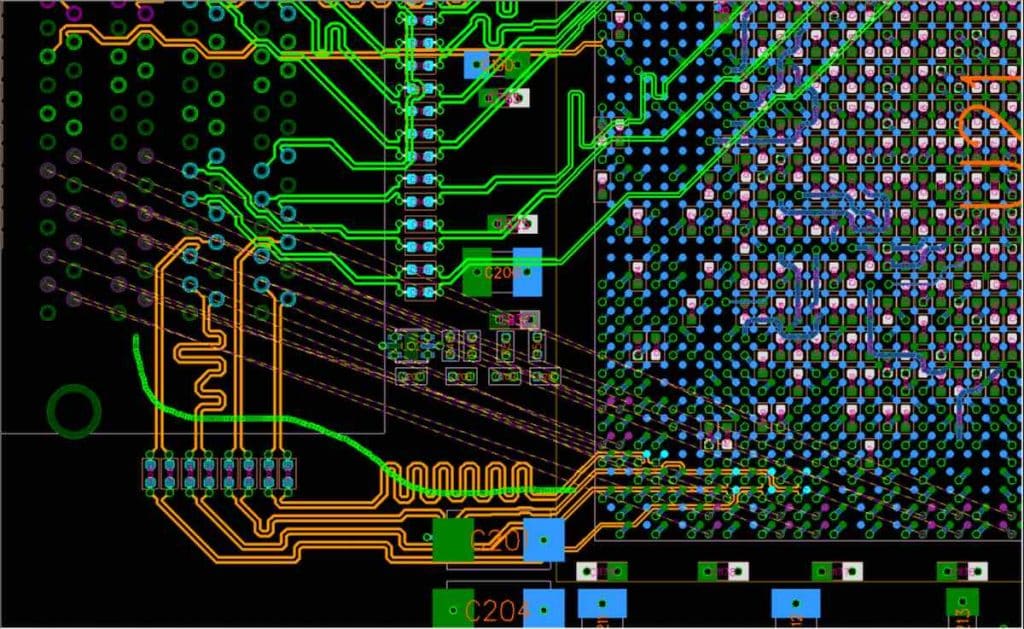Electronics have become essential to daily life. Everything from refrigerators to military aircraft contains electronics. Today’s critical advanced assembly challenges mainly fall into three categories: performance, usability and productivity. To build and visualise product designs quickly and economically, engineers must address all these challenges.
On the other hand, manufacturing techniques are becoming more advanced and aesthetics are increasingly in demand. Project lifecycles and budgets are constrained. Sometimes, these constraints mean that DFM standards are overlooked in PCB design. For example, if the PCB has to fit in a box of fixed dimensions, the PCB design has to be tweaked accordingly. Or, components with different reflow profiles may be used on the same sid
Newer design houses or inexperienced engineers and designers may be prone to these mistakes. But not validating designs with tool and industry standards is bad practice. Here are just a few examples:
Pad mismatch
If the copper termination pad separates partially or completely from the board, it can be hard to identify the fault; the pad may look intact as the solder usually remains attached to the component. The cause is usually mechanical strain that begins during testing, manufacturing, vibration while being transported or even when connectors are attached. PCB performance is impaired and performance is inconsistent. Extensive or even destructive testing may be required to positively identify the cause. Podrain follows a painstaking process to minimise the risk of damage from pad mismatch at each step.
No silkscreen.
The silkscreen does not impact the electrical functionality of a PCB, but it is still extremely valuable as it provides essential information when assembling the PCB. It provides simple visual feedback that helps to catch deeper problems. It is not merely for aesthetic purposes. It is information that should not be separated from the board. Unique ID numbers, warning symbols, certifications etc. should be displayed on the board. At Podrain, we treat correct and comprehensive silkscreens as an integral part of the PCB.
THT vs. SMT components.
When SMTs were developed in the 1980s they were expected to completely replace THTs. But THTs and SMTs are not always interchangeable. THTs offer reliable and useful in test and prototyping applications where frequent manual adjustments and replacements are needed. But SMTs are almost always more efficient and cost-effective. Podrain’s extensive experience in a wide range of applications gives us the expertise to know which type of components to use for a given project.
Incorrect polarity marking.
To prevent polarised component packages from being inverted during assembly machine setup or manual soldering, accurate polarity marking is critical. It is only necessary for land patterns that have a specific rotation during assembly. Incorrect polarity markings can cause equipment damage, short-circuiting, serious injury, fires or even explosions. Podrain follows stringent Post Assembly Inspection Process protocols to visually validate that assembly insertion is done correctly
Incorrect component separation.
Most designers are used to PCB clearance rules for spacing between traces in a single layer. However, many design houses overlook PCB clearance between layers. Today’s circuit designs often involve a single PCB with power and controls on the same substrate. This may put high-voltage traces close to low-voltage signals, creating a risk of arcing. The resulting sparks can permanently damage the port of the low-voltage component. Podrain designers and engineers keep ourselves up to date on the latest IPC-2221B design standards to ensure optimum manufacturability with minimum risk.
Podrain’s customers have brought us some interesting design challenges.
A top manufacturer of electric vehicle charging stations found that the PCBA yield was below 90%, lower than expected. The company approached Podrain to investigate. The issue was all the more challenging because the assembly was ROHS. Planning and finding the right profile, especially on a PCB that uses BGA + LGA, is an art. By devoting our experienced people to solve this, we iterated through a range of 11 temperature profiles in a reflow oven within just 2 days to find the solution.
Another customer set us the challenge of setting the right profile for a board designed with a heavy BGA connector having multiple ceramic BGAs, including micro BGAs, on a 2mm thick PCB. The issue is these kind of connectors use very high temperature for soldering. 265 degree Celsius plus is needed for soldering but a normal BGA can tolerate only 245 to 255 degree Celsius. We designed and conducted multiple trials by changing the solder paste for each profile. After 15-20 trials supported by some fixtures, we were able to determine the best profile for the customer’s board.
Podrain has solved many such complex assembly design challenges for our customers.


